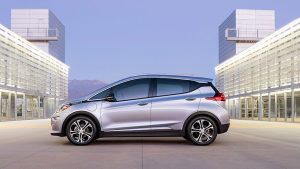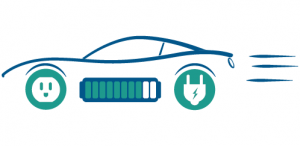We keep telling you that Electric Vehicles are cleaner. Let’s focus on that, and combine all that we’ve said in other blogs, and explain why. We’ll start with tailpipe emissions.
“Why are EVs cleaner than their internal combustion engine counterpart? Because they have no tailpipe emissions, utilize cleaner methods to source their electricity, and utilize cleaner manufacturing methods.”
An electric vehicle powered by its onboard battery emits no tailpipe emissions. No carbon dioxide or carbon monoxide (the most commonly talked about tailpipe gases). Nor any nitrogen oxides nor sulfur dioxides, which can cause damage to our lungs. No Hydrocarbons, or ozone, which in the upper atmosphere is great, but in the lower atmosphere contributes to the build up of smog (think of Los Angeles, Beijing, Tokyo and more). And finally, benzene which is a carcinogen (this replaced lead). So, long story short, the more EVs on the road, the safer it is to live near them and breathe the air around them.

Greater efficiency means lower emission
When we talk about the power plants that POWER electric vehicles, the first thing to say is that EVs lead to lower carbon emissions overall even if the electricity “fueling” it comes from substantial amounts of fossil fuel. This is because EVs process the energy so much more efficiently. Gas powered cars utilize fuel at around 30% efficiency, whereas EVs utilize their fuel at around 80% efficiency. Because an EV uses the fuel so much more efficiently, pollution from vehicle travel can be drastically lower on the grand scale. A 2020 study by the University of Exeter found that EVs already result in lower lifetime emissions in 95% of the world’s countries.
Gasoline isn’t getting any cleaner, the grid gets cleaner every DAY
Another important point to remember is that the grid continues to get cleaner over time, whereas gasoline production has actually gotten dirtier as the oil easiest to extract and refine is depleted. Using cleaner fuels, eliminating coal, and utilizing more and more renewable and carbon neutral resources.
Now let’s look at the footprint going from the entire lifecycle of any electric vehicle, be a Plug-in Hybrid Electric Vehicle (PHEV), or a full Battery Electric Vehicle (BEV). What goes into the mining process, the transportation of all the required resources, and the factories that build those electric vehicles.
(On a side note, EVs are now being built with less and less cobalt, and those using cobalt are making sure it is sourced from safe and socially responsible supply chains). Learn more about the Responsible Cobalt Initiative (RCI)
A 2015 study conducted by the Union of Concerned Scientists found that even when accounting for the impacts of battery manufacturing, vehicle manufacturing, and transportation, EVs reduce life cycle emissions by at least 50%. With more manufacturers designing their product lines solely for EV production, and utilizing methods of manufacturing (such as solar and wind powered giga factories), combined with economies of scale bringing down the required resources for manufacturing, that life cycle emissions reduction continues to get better each year.

So, to put it simply, why are EVs cleaner than their internal combustion engine counterparts? Because they have no tailpipe emissions, utilize cleaner methods to source their electricity, and utilize cleaner manufacturing methods to contribute to a cleaner and leaner lifecycle.
And finally, EV street races are the quietest EVent you’ll ever hear, so the midnight street race won’t wake the neighbors. You didn’t hear that from me though!
Questions? Comments? Looking to learn more about EVs? Contact Us and we’ll happily help.





